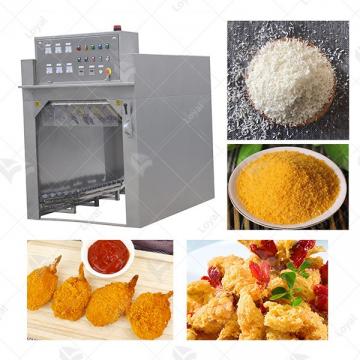
- Shandong Loyal Industrial Co.,Ltd.
- Macaroni Production Machine Instant Noodle Machine Biscuit Making Machine
Home> Processing> What are the three basic steps to oil refining?

What are the three basic steps to oil refining?
2021-07-01 14:21:05The Refining oil production line produced by Shandong Loyal Industrial Co., Ltd. has very high quality, stable operation, high-quality stainless steel materials can be used for a long time, equipment area is small, low investment, and the edible oil produced is clear in color.
Edible oil is a necessity for people's lives.It is an important food that provides human body heat and essential fatty acids. And promotes the absorption of fat-soluble vitamins. With the rapid improvement of the modern economy. People’s living standards have changed a lot. In the past, people can use a barrel of oil for a long time. But now people are no longer stingy in the use of oil. And the quality of edible oil is also required. More and more stringent.
Now when people buy edible oil. They no longer stay at the level of compliance with hygiene and safety standards. But pay more attention to the health and nutrition of edible oil. The refining method of edible oil has an important effect on the quality of edible oil products. Such as appearance, nutritional content, flavor substances and the content of toxic and harmful impurities. Reducing production costs, improving the production process, and producing higher-quality edible oils have become problems faced by manufacturers at all times.

What are the three basic steps to oil refining?
According to the professional technical article in the top three cost-effective refining production lines in 2021. The three basic steps for manufacturers in refining are separation, conversion and treatment. These three steps are indispensable. Only in this way can the highest quality oil be produced. So as to be used in various industries.
Separation is the first step. It mainly refers to the separation of molecules by atmospheric distillation based on molecular weight. The heavy residue left after atmospheric distillation still contains many products of medium density. And the residue is transferred to another tower. There is a second distillation. After separation, there are still a lot of heavy hydrocarbon molecules remaining. In order to meet the demand for light products, the heavy molecules are "cracked" into two or more light molecules. The conversion process takes place at 500°C and is also called catalytic cracking because it uses a substance called a catalyst to accelerate the chemical reaction. Treatment includes removing or significantly reducing corrosive molecules or molecules that cause air pollution, especially sulfur.
In the edible oil production process. In order to ensure production quality and production efficiency. Manufacturers usually use Refining oil production line for production. The specific production process includes crude oil preparation, degumming, deacidification, deodorization and decolorization.
Crude oil preparation refers to the preparation of crude edible oil by pressing.

Degumming refers to the degumming treatment of crude edible oil. The specific process is to heat the crude edible oil to 50-70°C and then add phosphoric acid solution to degumming reaction, stir for 30-60min, stir at 50-80rpm, and centrifuge to obtain degummed wool. oil.
Deacidification refers to the deacidification of the degummed crude oil. The specific process is to add lye to the degummed crude oil to carry out the alkali refining reaction. The temperature of the alkali refining reaction is 60-70°C, and the stirring time is 40-60 min. , The stirring rate is 60-90 rpm to obtain alkali refined oil, and then water or citric acid is added to the alkali refined oil and centrifuged to obtain deacidified crude oil.
Decolorization refers to the addition of activated clay to the deacidified crude oil for a decolorization treatment, solid-liquid separation to obtain pre-decolorization crude oil, and then addition of activated carbon to the pre-decolorization crude oil for secondary decolorization, and decolorization is obtained after solid-liquid separation. oil.
Deodorization means that the decolorized crude oil is first deodorized through a plate-type deodorization tower, the temperature of the deodorization treatment is 180-210°C, and the time is 1.5-2.5h, and then the crude oil that has undergone the deodorization treatment is passed through the packed deodorization tower. After the second deodorization treatment, the deodorized crude oil is obtained. The temperature of the second deodorization treatment is 215-225°C and the time is 5-15 minutes.
Afterwards, the deodorized crude oil is filtered for impurities, and the impurities in the deodorized crude oil are removed by double filtering through filter paper and filter cloth to obtain semi-finished edible oil. Then, the temperature of the semi-finished edible oil is cooled to -3-4°C, kept for 3-5 hours, and then vacuum filtered at 0-3°C to obtain a finished edible oil.

In this way, the production of edible oil is completed, the production process is more complicated, and high-tech is used, but with the help of professional equipment, the entire production process becomes very easy.
The Refining oil production line produced by Shandong Loyal Industrial Co., Ltd. has very high quality, stable operation, high-quality stainless steel materials can be used for a long time, equipment area is small, low investment, and the edible oil produced is clear in color. It meets the national edible standards and is no different from well-known edible oils, but the production cost can be effectively controlled and the market scale can be further expanded. In addition, our biscuit production line, baby food production line and corn flakes production line are all well received.
The improvement of living standards has continued to increase the demand for edible oil. If you want to reduce production costs and produce higher quality edible oil, please contact us!
 Commercial Japanese Panko Bread Crumb Grinder Machine
Commercial Japanese Panko Bread Crumb Grinder Machine Japanese Bread Crumbs Processing Line
Japanese Bread Crumbs Processing Line Automatic Cookies Making Machines
Automatic Cookies Making Machines Fully Automatic Biscuit Making Machines
Fully Automatic Biscuit Making Machines